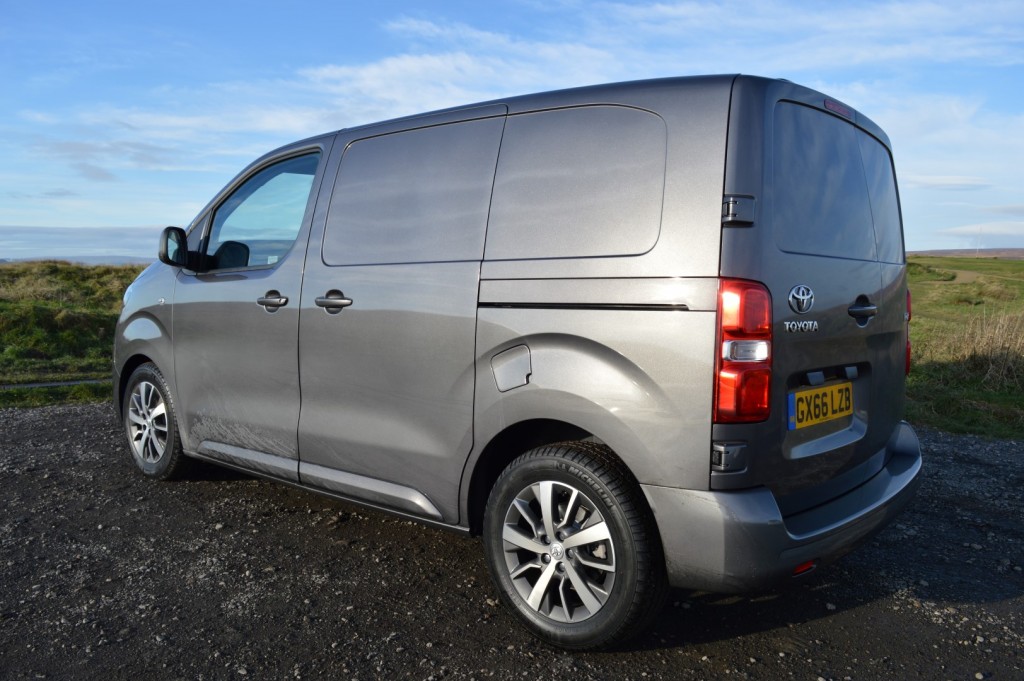Road Test and Review – Toyota Proace
A smart new kid on the block…
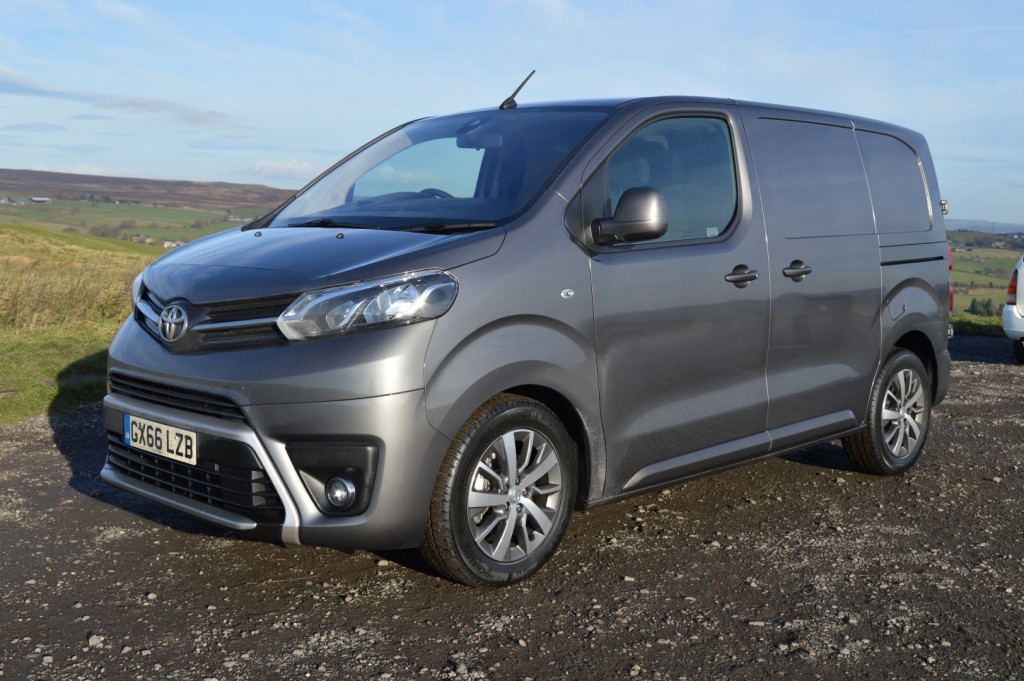
Background
Since the demise of the popular Hiace van a few years ago Toyota had lacked an offering in the panel van sector. Things changed, albeit in a modest fashion in 2012 when the company entered into an agreement with PSA Peugeot Citroen and launched their own version of the Peugeot Expert / Citroen Dispatch / Fiat Scudo van, a vehicle already very dated and long overdue a major facelift. Privately, Toyota GB would admit that the venture was an attempt at a ‘toe in the water’ and aspirations were extremely modest. Indeed, the previous model Proace is a very rare sight on our roads.
2016 saw a major relaunch of the Toyota commercial vehicle brand in the UK with two new products, a refreshed Hi-Lux pick up and a brand new Proace, again the fruits of a joint venture with PSA Peugeot Citroen who simultaneously launched their new Expert and Dispatch vans (Fiat choosing to leave the alliance and enter into an agreement with General Motors culminating in the launch of the Talento (based on the Renault Trafic / Vauxhall Vivaro / Nissan NV300)). The launch of these vehicles coincided with the announcement from Toyota GB that the dealer network was to be restructured with the appointment of specialist LCV centres within its established network of business dealerships.
Toyota GB claim that, although fundamentally similar to the French offerings, they had substantial input into the design and specification of the Proace and that the changes are not restricted to an arbitrary rebadging. Indeed, the external differences at the front of the van are significant.
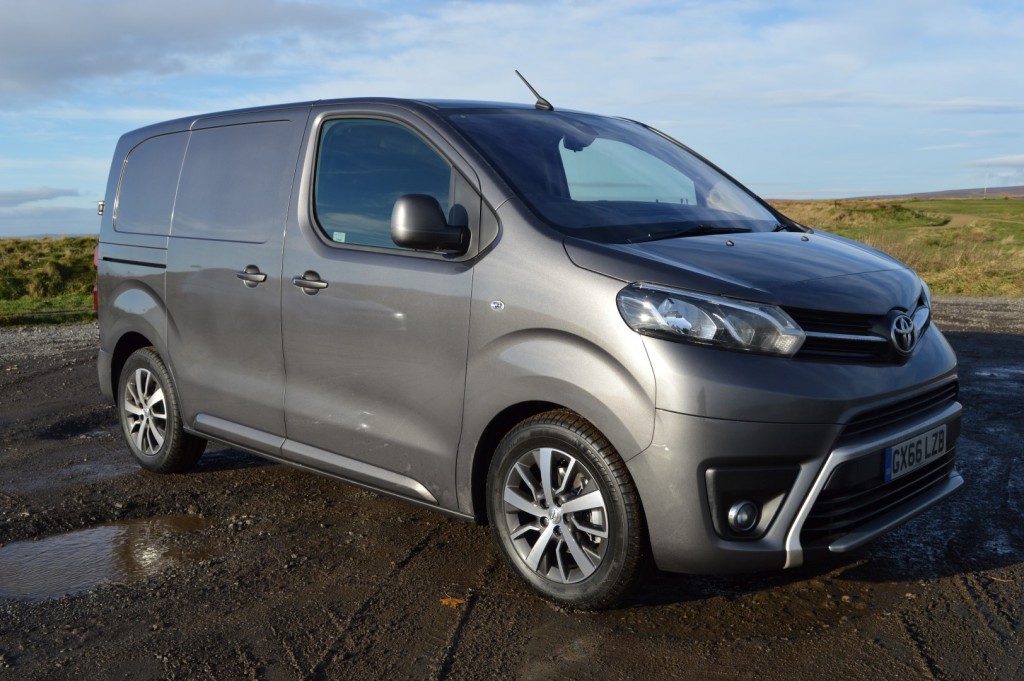
Specification and features
The Proace is offered in three lengths, one roof height and two trim options, or ‘Grades’, Base and Comfort. A Combi version is also available. The test van provided was a Comfort in the shortest guise but also had the optional Toyota Safety Sense package (Forward Collision Warning, Adaptive Cruise Control, Pre-Collision System, Head Up Display, cornering lights, raid and dusk sensors, auto-dimming rear-view mirror and Toyota Pro-Touch 7″ screen). Also on the test van was the optional Premium Pack which offers 17″ alloy wheels and satellite navigation. The base van is well equipped in its own right. Standard features include twin side loading doors, twin rear doors, cruise control, DAB radio, Bluetooth, hill start assist, electric windows and mirrors and a full height steel bulkhead. The Comfort model adds air conditioning, improved sound proofing, under passenger seat storage, body coloured bumpers, mirrors and door handles, front fog lights and a chilled glovebox. Three Euro 6 engine options are available, two 1.6 litre units (95 and 115hp) and a 2.0 litre 120hp range topper. Payloads range from 1100kg right up to 1487kg.
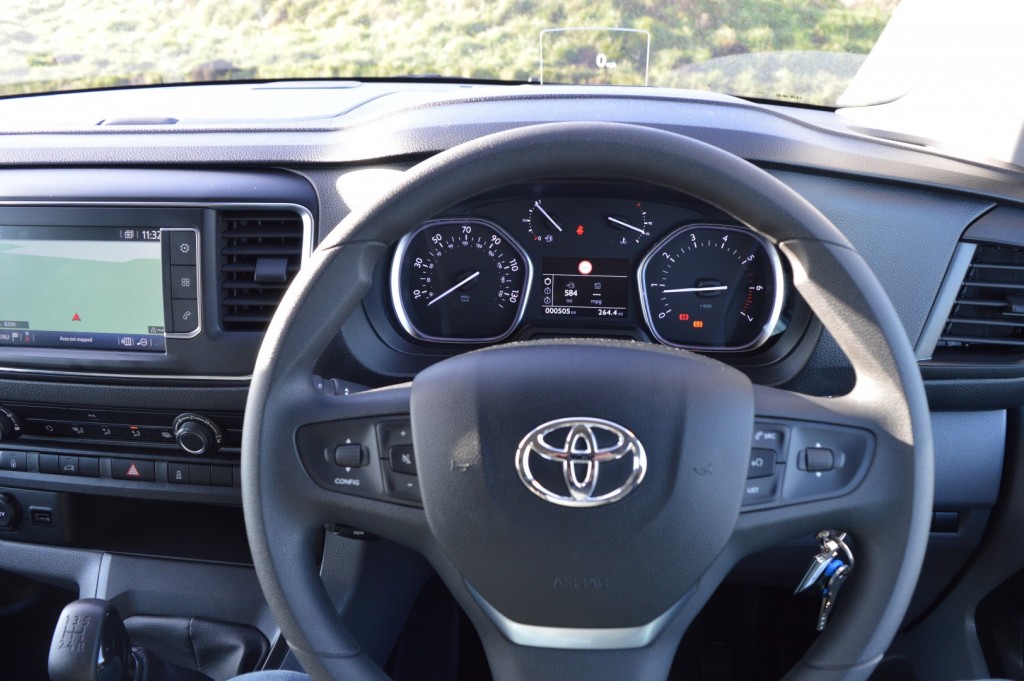
The cab environment
Feeling significantly smaller in many ways than the more commonplace medium panel vans such as Transit Custom and Mercedes Vito the Proace is very easy to enter and exit. Despite this, once in the driving seat you’re in no doubt that you are in a commercial vehicle and visibility is excellent. The dual passenger seat clearly demonstrated that the cab is narrower than other vans, two quite slim passengers mentioning that it was ‘more than a little cosy’. The dash is clear, very functional and unpretentious with the centrally positioned media unit within easy reach of the driver. This unit itself is much easier to operate than those fitted by some competitors with logical menus and we managed to quickly learn how to operate the radio, navigation, Bluetooth and safety functions without having to consult a manual. A trip computer is located in the main instrument panel clearly displaying optional combinations of data. A multi functional (but not leather bound) steering wheel facilitated operation of many functions without hands having to leave the wheel itself. A 12v accessory socket and a USB input are located centrally with a further 12v output on the passenger side.
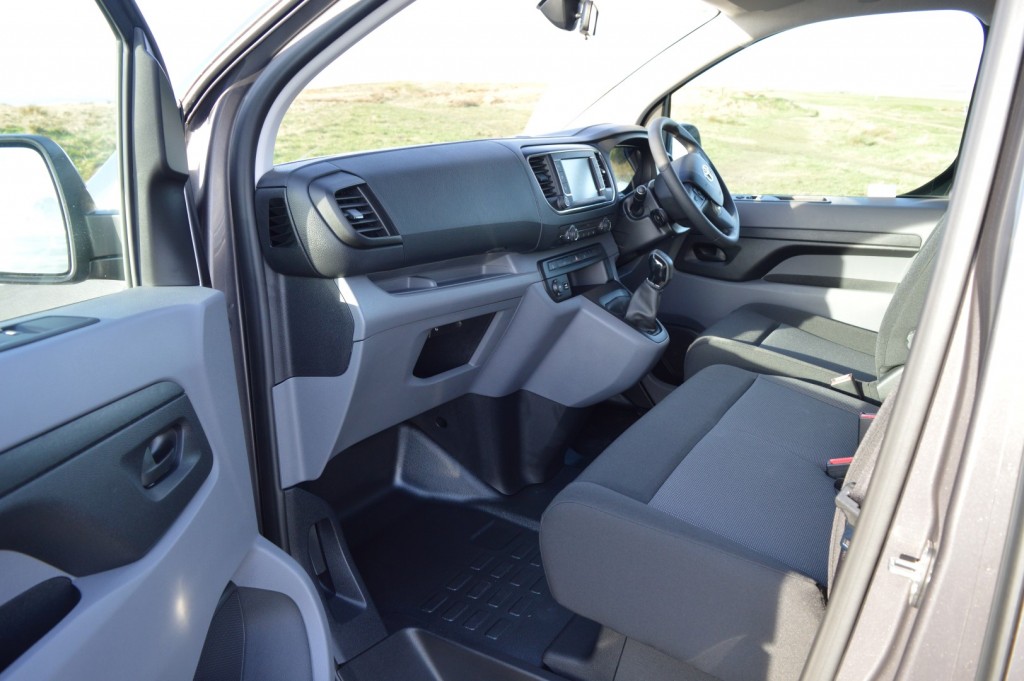
Cab storage is more than adequate. A huge storage bin is fitted to both cab doors and a good sized glovebox is complimented by further capacity in a shelf underneath. The top of the dash has two cup holders and a large, lidded document holder. The Comfort model comes with the facility to lift the passenger seat base revealing a further area of discreet storage. Worthy of specific mention is the head up display fitted to the Comfort models. Once the engine is running a small transparent panel appears on the top of the dash, directly in front of the driver and adjacent to the windscreen. Reflected in this is the current road speed and, if activated, the cruise control settings. Far from being distracting this works in practice very well and allows the driver to keep a check on speed without taking his eyes completely off the road.
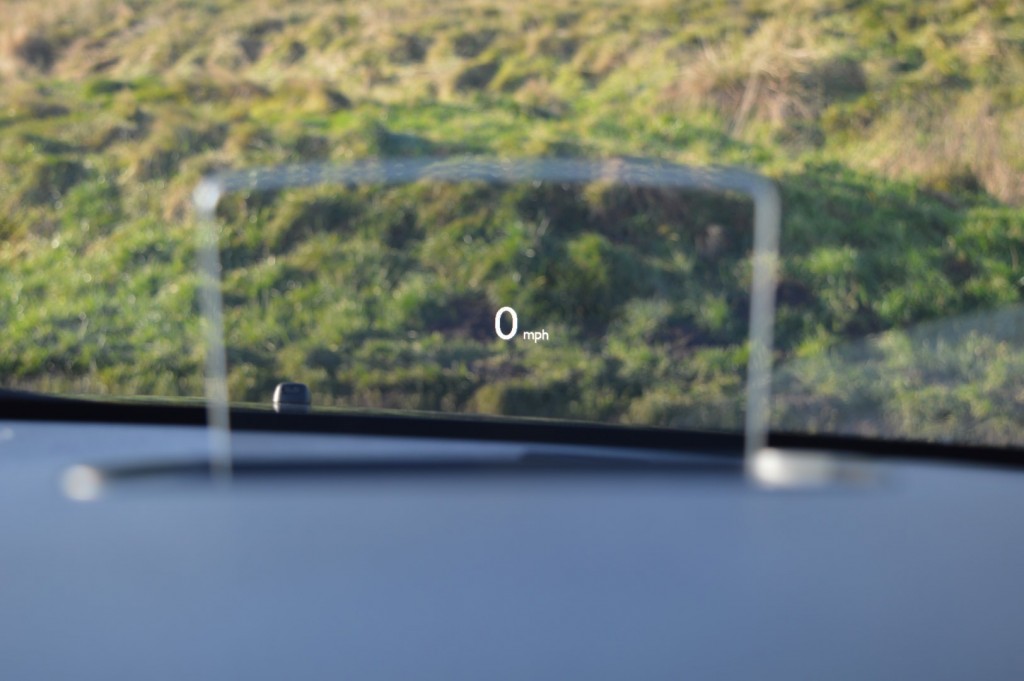
Loadspace
The twin side loading doors and 180 degree opening rear doors give excellent access to the load area. Together with a very low loading height and extremely unintrusive wheelarches the design of the van is very practical from a loading and unloading perspective. A full height bulkhead protects the driver and passengers and 6 load lashing eyes facilitate the securing of loads. The interior lighting could be improved, the two (not LED) lights fitted proving to be a little inadequate.
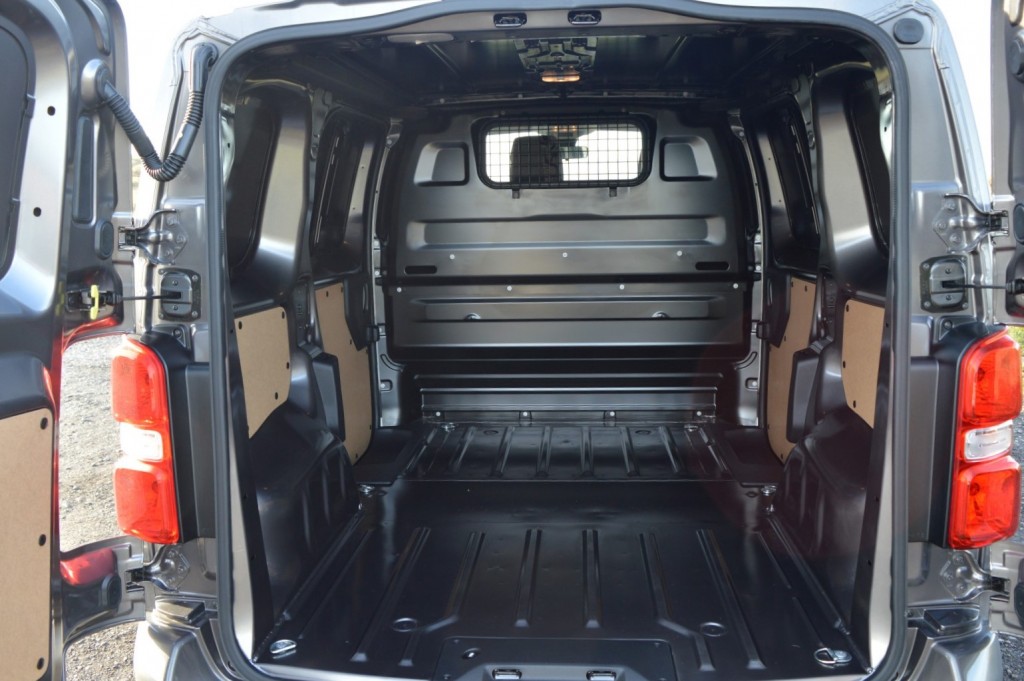
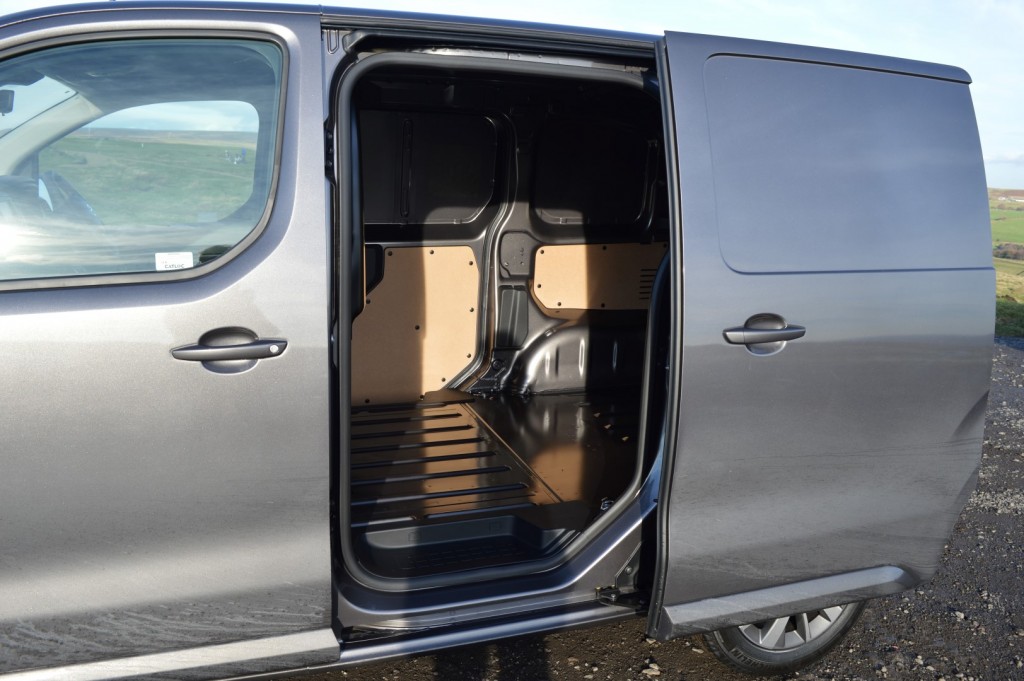
On the road
The Euro 6 engine is smooth and quiet from cold. Although the test van had the lower powered 95hp engine fitted performance, although not earth shattering was perfectly adequate (we were unable to test the vehicle in anything but an unladen state). On motorways cruising at 70mph was effortless, quiet and relaxed. General handling was precise and around town the van proved very nimble with a very tight turning circle which will no doubt benefit those involved in urban delivery operations. General noise levels were unobtrusive and there were no squeaks or rattles from the van, one being left with the impression that build quality was to a high standard. Our only gripe was the gearchange which felt a little distant and notchy although the lever was well positioned. Although the van lacks the unquantifiable ‘just feels right’ factor that is almost exclusive to the Ford Transit Custom, it provides a very pleasant drive indeed. Our week with the van resulted in a very creditable average fuel consumption of 47.1mpg with a good mix of urban, rural and motorway journeys.
Conclusion
Unlike a typical 1 tonne panel van the slightly smaller Proace sits in an odd, almost subsector previously occupied by the likes of the Fiat Scudo, Peugeot Expert, Citroen Dispatch and Nissan NV200. Typically used by the retail / SME markets other manufacturers have neglected it in favour of smaller vehicles such as the Transit Connect or the larger Transit Custom or Volkswagen Transporter. The PSA alliance produced Expert and Dispatch have been long overdue for replacement and popularity has waned, both in the new and used markets. The new Proace is a very worthy contender for any van user who requires a vehicle with a small footprint, which is easily manoeuvrable, takes a reasonable load volume and a good payload. The van supplied for test had a plethora of safety and technology features comparable to many modern passenger cars and with external styling which would be acceptable to most it’s very hard to fault. The only issue for Toyota (and Peugeot and Citroen with their equivalent models) might be the size of the market for such a van.
